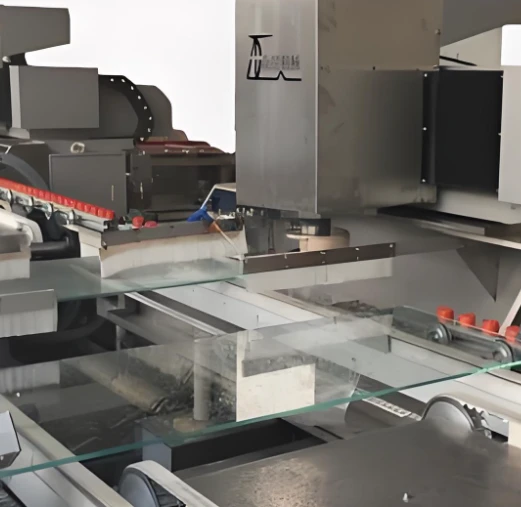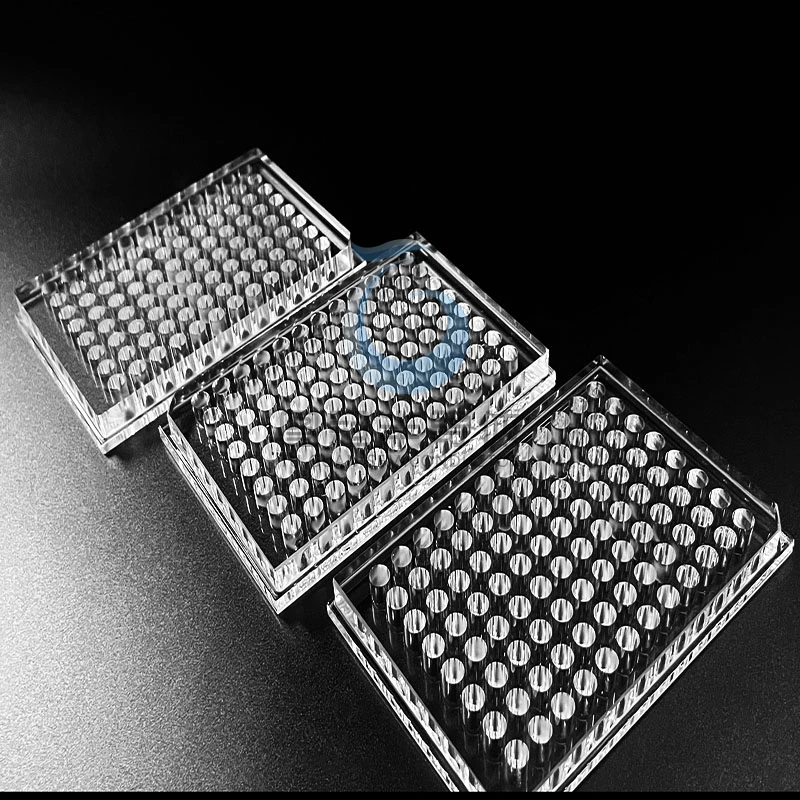Call us: +86 0518-87284110
Fused Quartz Microplates & Multi-Well Assay Plates
Fused quartz microplates for high-throughput assays, ELISA, fluorescence/absorbance readouts, and other sensitive bio/chemical analyses. Built from high-purity fused silica, these plates provide exceptional UV transparency, very low autofluorescence, chemical inertness, and tight dimensional control for reliable, contamination-free results with modern plate readers.
What to Provide for a Quote
- Drawing (PDF/STEP) or format: 96 / 384 / 1536 wells, SBS footprint, skirt type (skirted / semi / low profile)
- Well geometry: flat / U / V / conical bottom; well Ø, pitch, depth; wall and bottom thickness; corner radius
- Optical requirements: transmission band (e.g., UV 200–400 nm), surface polish, bottom flatness for imaging, allowable autofluorescence
- Surface options: native quartz, hydrophilic/hydrophobic treatment, silanization or anti-adsorption coatings (by request)
- Identification & handling: A1 orientation mark, barcode/2D code, fiducials, alignment features, cover/film type
- Operating conditions: solvents/chemicals, temperature range/thermal cycling, cleanliness/sterility level
- Critical tolerances: well pitch/position, bottom thickness uniformity, plate flatness/warp
- Quantity (prototype or batch), inspection reports needed, packaging level
Key Specifications
- Material: High-purity fused quartz (SiO₂); UV-grade fused silica available by request
- Formats: SBS-compatible 96/384/1536-well plates; custom well count/layouts; single-well quartz view plates
- Geometry: Cylindrical or tapered wells; flat/V/U bottoms; through-plate windows for imaging; optional quartz lids/covers
- Surfaces: Optical-polished well bottoms for high NA imaging; ground/polished edges; deburred, chip-free wells
- Cleanliness: Ultrasonic/DI cleaning; Class-100 compatible packaging; optional pre-cleaned or bagged-by-lot
- Construction: Monolithic or bonded quartz assemblies; stress-relief annealing available
Material Properties (Typical)
- High internal transmission from deep-UV to visible (grade-dependent)
- Extremely low autofluorescence and low extractables; excellent chemical resistance (note: HF attacks quartz)
- Very low CTE and good thermal-shock tolerance; electrically insulating and low outgassing
Processing & Design Notes
- Define optical path length (well bottom thickness + fill height) for accurate absorbance calculations
- Specify imaging area size/flatness for microscopy; polish only the zones that impact measurement to optimize cost
- Keep well pitch per SBS standards for reader compatibility; maintain uniform bottom thickness to reduce focus drift
- Add fiducials/barcodes and A1 corner to assist automation; consider anti-adsorption coatings for protein assays
- For bonded designs, select adhesive-free fused joints or low-outgassing bonding per application
Inspection & Testing
- Dimensional verification: footprint, plate height, well count/position, pitch, Ø, depth, bottom thickness
- Flatness/warp check across the plate; edge and corner quality inspection
- Optical tests on request: UV/Vis transmission at key wavelengths (e.g., 230/260/280 nm), autofluorescence benchmarking, surface roughness of bottoms
- 100% visual inspection for chips, digs, inclusions, and contamination; cleanliness certification by lot if required
Applications
ELISA and absorbance assays, fluorescence and luminescence readouts, cell-based imaging on quartz windows, DNA/RNA and protein quantification in UV, high-purity chemistry screens, analytical and microfluidic experiments
Packaging & Storage
Lint-free trays with cavity separators; vacuum-sealed or cleanroom-bagged packaging; optional lot labeling and barcodes. Store at 10–30 °C, <40% RH. Handle with powder-free gloves; avoid contact with HF-containing chemicals.
Notes
Custom configurations (hole patterns, coatings, or additional markings) available upon request.
Compliance certificates (RoHS, ISO 9001) provided with bulk orders.


